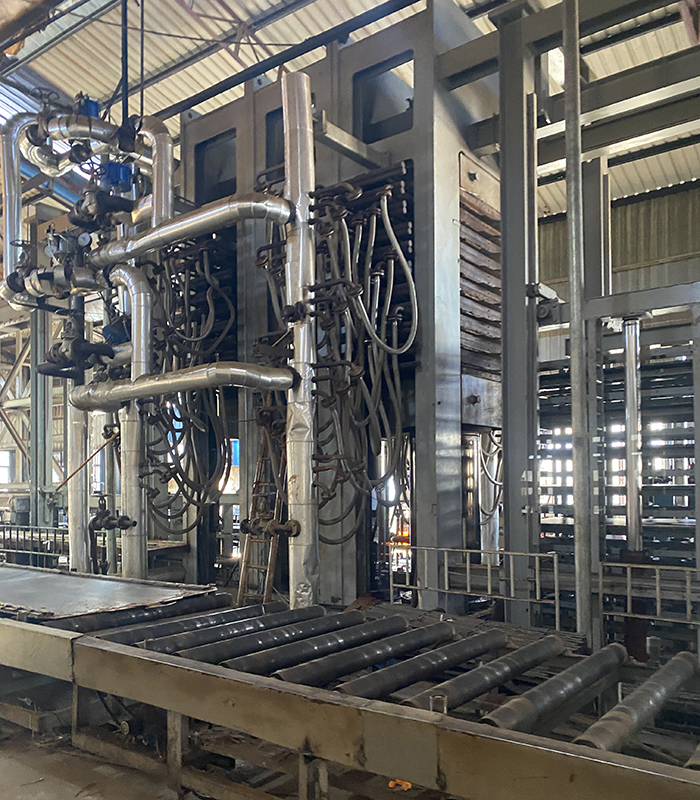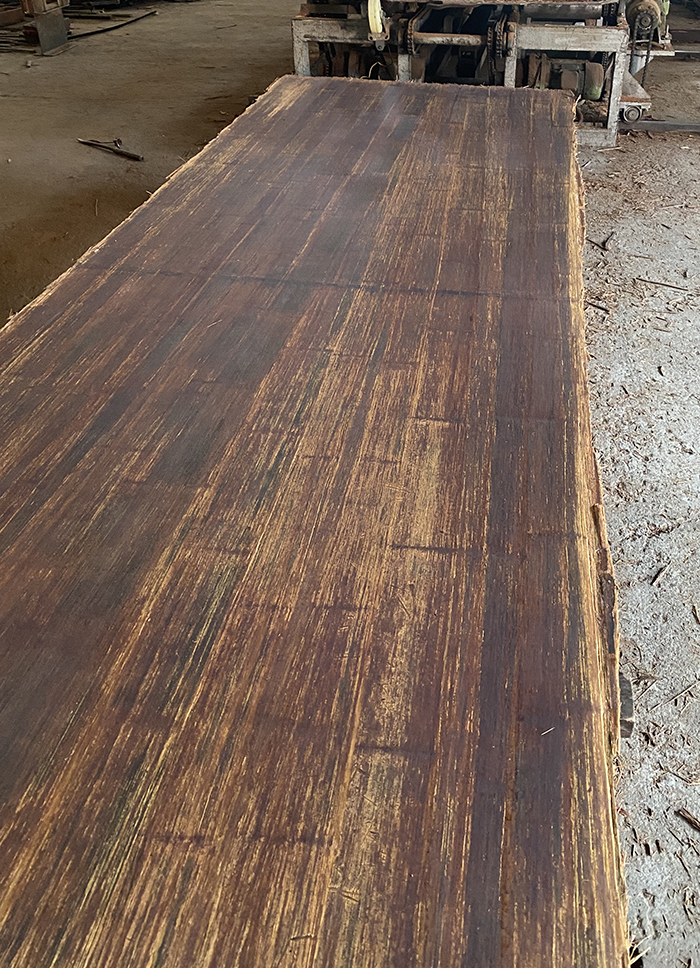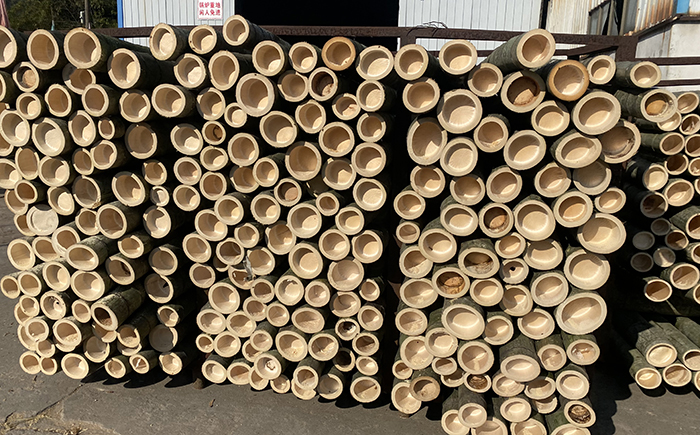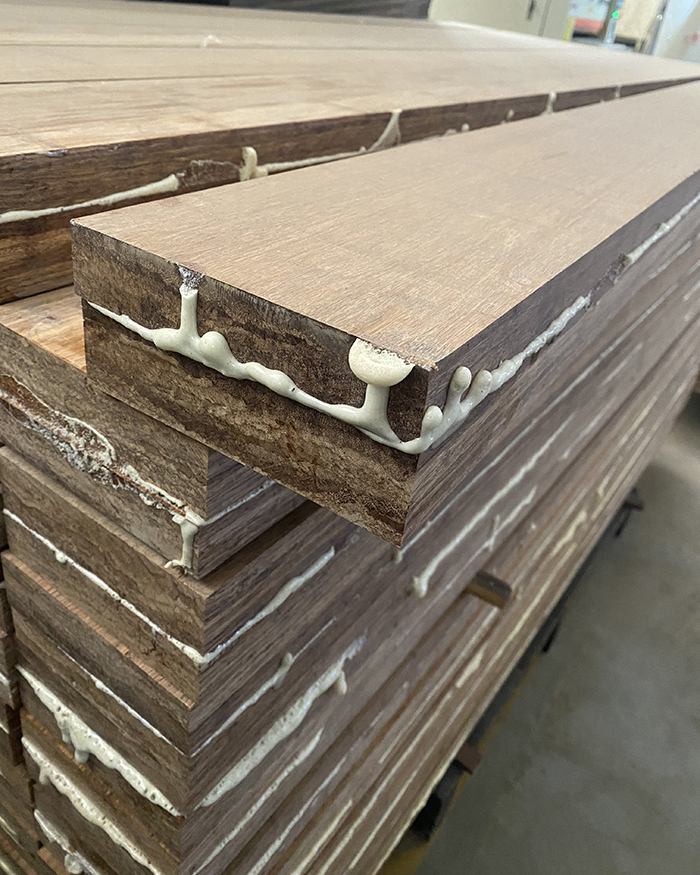Outdoor Bamboo Plywood Panels
Dec 3, 2025, 9:20 AM
Materials for outdoor areas must be long-lasting, environmentally friendly, and aesthetically beautiful in order to endure the elements and hold their beauty over time. Presenting strand-woven bamboo outdoor bamboo plywood panels, a ground-breaking innovation that combines state-of-the-art engineering with the most renewable resource in nature.

Bamboo fibers are compressed under tremendous pressure to make strand woven bamboo, which is a very dense, durable, and weather-resistant material. These panels combine the performance qualities of hardwood with a gorgeous natural appearance, making them perfect for a variety of outdoor applications, including decking, cladding, outdoor furniture, and decorative projects.
We make the outdoor quality standard of strand woven bamboo from very beginning, we get the harvested bamboo from local farmers, then cut down, split and boil. Then we send to crush the strips and carbonize them, we have one very big presser which is 20-layer with 5400 tons, our maximum length is 3850mm, maxium width is 1250mm, the thickness is from 5mm up to 50mm, like 10mm, 15mm, 20mm, 25mm, 30mm, 35mm, 40mm, 45mm. We also can do a thickness of 100mm by pressing 2 pieces of 50mm panel together, but this is cold press.
When we do 3850mm length, the strongest point is that we use full length of bamboo strips in 3900mm, not joining 2 pieces of 2000mm together, this can guarantee the entire panel or whole plywood has a great tensile strength and an even density, two ends and middle are the same density.

The Versatile Applications of Strand Woven Bamboo
Strand-woven bamboo is used to make outdoor bamboo plywood panels, which are an eco-friendly and adaptable material that may be used for a number of outdoor applications. These panels are becoming more and more popular for outdoor projects in both residential and commercial settings because of their remarkable strength, resilience to weather, and durability. Let's examine the main uses that maximize this cutting-edge substance:

1. External Siding and Cladding
Strand woven bamboo panels are a great option for external cladding because they offer a pleasant, natural look that goes well with a variety of architectural designs. Even in severe weather, the panels' structural integrity and aesthetic appeal are preserved because they are coated to withstand moisture and UV radiation. Bamboo cladding can produce an eye-catching, environmentally friendly façade for contemporary residences or business structures alike.
2. Decking outside
Strand woven bamboo panels are perfect for outdoor decking because of their exceptional density and toughness. They are a resilient substitute for conventional hardwood decks since they can tolerate high foot traffic, survive weather, and not get scratched. They are also a sensible option for pool areas or damp settings because of their non-slip surface.
3. Structures for Gardens and Landscapes
Pergolas, gazebos, trellises, and fencing are examples of garden constructions that can be made with bamboo plywood panels. Bamboo's strength guarantees that these buildings stay strong and durable even when exposed to the elements, and its inherent beauty mixes in perfectly with outdoor settings.
4. Outdoor Furnishings
An increasing number of outdoor furniture pieces, including tables, benches, and seats, are made from strand-woven bamboo panels. They are ideal for outdoor use because to their high density and moisture resistance, which guarantees that furniture will stay strong and fashionable even when exposed to sunlight, rain, or humidity. The organic beauty of bamboo also gives outdoor living areas a sophisticated, earthy appearance.
5. Outdoor Pathways and Flooring
Strand woven bamboo panels provide a stunning and durable surface for patios, balconies, or garden walkways. They are perfect for outdoor flooring because of their endurance and resilience to weather, offering a natural substitute without sacrificing quality. These panels are ideal for high-use outdoor spaces since they can withstand temperature changes and strong foot activity.
6. Privacy Screens and Fencing
Bamboo is a great material for outdoor fencing and privacy screens because of its inherent beauty and strength. Bamboo panels with strand weaving provide a durable, sustainable option that is resistant to UV rays, wind, and rain. Without requiring ongoing upkeep, they are perfect for establishing quiet, private sections in terraces, gardens, or poolside areas.
7. Outdoor Pavilions and Shelters
Strand woven bamboo panels offer a stylish yet remarkably durable material for larger-scale constructions like pavilions, shelters, or outdoor gazebos. perfectly order to create long-lasting outdoor structures that match perfectly with their natural surroundings, the panels can be utilized as wall or roofing materials.
8. Decorative elements and signs
In parks, resorts, or business settings, strand-woven bamboo plywood can be utilized for creative installations, attractive wall panels, or outdoor signs. Even complex designs will last over time while maintaining their aesthetic appeal thanks to its resilience.

What Makes Strand Woven Bamboo the Best Option for Outdoor Use?
- Extreme Durability: Strand-woven bamboo panels are resilient to weathering, impact, and wear because they are two to three times harder than conventional hardwoods.
- Sustainability: Compared to slow-growing hardwoods, bamboo is a resource that can be replenished quickly.
- Weather Resistance: Treated panels are perfect for outdoor situations since they can withstand harsh weather conditions like UV rays, rain, and temperature changes.
- Low Maintenance: Compared to typical wood items, strand woven bamboo requires less maintenance and is easier to maintain.
- Aesthetics: Whether used in eco-friendly, modern, or rustic designs, bamboo's organic, cozy look accentuates the beauty of outdoor areas.
By selecting strand-woven bamboo for outdoor bamboo plywood panels, you're picking a material that looks fantastic and performs remarkably well in harsh outdoor conditions. These panels provide the ideal balance of strength, sustainability, and style, whether you're constructing a deck, cladding a building, or creating outdoor furniture.

The Treatments on Strand Woven to Extend its Lifespan
Although strand-woven bamboo is robust and long-lasting by nature, some treatments are required to improve its weather resistance before it can be used outside. These treatments aid in shielding the material from biological deterioration like mold and rot, moisture, UV rays, and temperature changes. The following are the main procedures that improve the resilience of strand-woven bamboo to outside environments:
1. Thermal modification, or heat treatment
Heat treatment, sometimes referred to as thermal modification, is a method that alters the molecular structure of bamboo by heating it to high temperatures (usually between 180°C and 220°C) in a controlled atmosphere devoid of oxygen. This procedure:
- Reduces moisture absorption: Bamboo's carbohydrates, which are the food source for bacteria and fungi, are changed by the heat treatment. The bamboo is more resilient to mold and deterioration as a result.
- Enhances dimensional stability: Bamboo that has been heat-treated is less likely to warp, swell, or shrink as a result of moisture or temperature fluctuations.
- Enhances UV resistance: The bamboo can be darkened by heat treatment, which gives it a more consistent look and increases its resilience to UV rays, which can cause discoloration or fading.
2. Coating with Oil or Wax
Strand woven bamboo is frequently treated with oil- or wax-based finishes to increase its resistance to weathering. These coatings provide a moisture-resistant barrier by penetrating the bamboo fibers. Typical oils used are:
- Linseed oil
- Oil of tung
- Teak oil
By helping to seal the surface, these oils stop water from deeply permeating the bamboo. Furthermore, a water-repellent layer is added via wax-based coatings, which increases the bamboo's resistance to moisture and rain.
3. Finishes Resistant to UV Light
Over time, the UV radiation from the sun can cause bamboo to deteriorate and fade. Manufacturers frequently use UV-resistant coatings to shield bamboo strands from UV rays. Among these finishes are:
- Bamboo's surface is shielded from the damaging effects of sunlight by UV inhibitors found in UV-blocking stains and varnishes, which maintain the bamboo's color and structural integrity.
- Clear topcoats like polyurethane or acrylic can be sprayed on bamboo to give it a hard, protective layer that shields it from UV rays without sacrificing its organic appearance.
4. Water repellents and sealants
Strand-woven bamboo is coated with exterior-grade sealants to provide a waterproof layer. After bamboo panels are installed, these sealants can be used to further shield them from moisture, rain, and snow. Water repellents, like sealers made of silicone or acrylic, assist keep moisture from getting to the surface, which lowers the possibility of warping, swelling, or the growth of mold.
5. Applying Pressure
Pressure treatment is occasionally used to increase the bamboo's resilience to rot, insect damage, and fungal decay. In order to ensure deep penetration into the fibers, preservatives are impregnated into the bamboo under high pressure. Typical preservatives consist of:
- Borates: They work well to keep termites, beetles, and other insects away from bamboo.
Preservatives based on copper are frequently used to preserve outdoor wood, and they can also be applied to bamboo to shield it from insects and fungus.
6. Chemical Treatments (Insect and Fungal)
Bamboo is vulnerable to insect assaults, mold, and mildew, especially in humid conditions. During the manufacturing process, strand-woven bamboo can be treated with anti-fungal and anti-insect chemicals to avoid these problems. The bamboo is shielded by these treatments from:
- Termites and insects that eat wood
- Mildew and mold
- Decomposition of fungi
To guarantee that the bamboo is protected from the inside out, these treatments are frequently applied either before the final finish or during the strand weaving process.
7. Using Outdoor-Grade Adhesives for Lamination
Bamboo fibers are compressed with adhesives under intense pressure to form strand-woven bamboo panels. Weather-resistant adhesives are applied during the lamination process for outdoor applications to guarantee that the panels will remain intact in a variety of weather situations. Typical adhesives consist of:
- Phenolic resins: These are perfect for outdoor application because of their exceptional resistance to moisture and temperature fluctuations.
- Adhesives based on melamine: These strengthen the connection and increase moisture resistance, keeping the bamboo fibers firmly compressed.
8. Treatments for Surface Hardening
To make bamboo denser and more resistant to weathering, abrasion, and wear, some manufacturers may impregnate the outer layer with resin or surface hardeners. This treatment can prolong the bamboo's life in outdoor settings and increase its resistance to environmental stresses.

Strand woven bamboo is made extremely resilient to the rigors of outdoor conditions by combining these treatments, which include heat treatment, UV-resistant coatings, pressure treatment, and waterproofing sealants. Bamboo panels are a great option for outdoor applications like decking, cladding, and furniture because of these treatments, which guarantee that they can resist moisture, sunshine, temperature variations, and biological threats like mold and insects.
Strand woven bamboo, when enhanced appropriately, provides the ideal ratio of sustainability, strength, and weather resistance, making it a long-lasting and environmentally responsible substitute for conventional hardwoods in outdoor projects.


 皖公网安备 34180202000049号
皖公网安备 34180202000049号